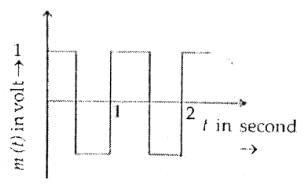Test: Drift Velocity & Resistivity of Electrons - NEET MCQ
20 Questions MCQ Test Physics Class 12 - Test: Drift Velocity & Resistivity of Electrons
Conversion of temperature into electric voltage is done with
For semiconductors, the major factor affecting the value of resistivity when temperature changes is
When a conductor is placed in an external electric field, the acceleration of its electrons will be
Resistors can be wire bound or carbon resistors. Wire bound resistors are generally made of
The dimension of the temperature coefficient of resistivity is
The winding of a motor has a resistance of 80 ohms at 15°C. Find its resistance at 50° C. the temperature co-efficient of resistance is 0.004/°C
On heating a conductor its resistance
Specific resistance of a conductor increases with
A steady current flows in a metallic conductor of non-uniform cross-section. The quantity/quantities constant along the length of the conductor is/are
A current of 2 ampere is passing through a metallic wire of cross-sectional area 2 x 10-6 m2. If the density of the charge carriers in the wire is 5 x 1026 m-3, then the drift velocity of the electrons will be
The standard resistance coil are made of “manganin” because
If the potential difference V applied on a conductor is doubled, the drift velocity of electrons will become
When a conductor is placed in an electric field, the force experienced by its electrons will be
Resistance of a conductor depends on
A carbon resistor is marked in green, red, and orange bands. The approximate resistance of the resistor is
Two special characteristics of the element of an electric heater:
The type of materials whose resistivity is affected on adding the impurity is known as
The average time that elapses between two successive collisions of an electron is called
Mobility of charge carriers in a conductor is given by
Manganin and constantan have a low temperature coefficient of resistivity which means that
|
98 videos|334 docs|102 tests
|






















